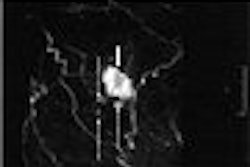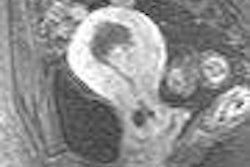PEBBLE BEACH, CA - Safety concerns were apparent even when the first 0.3- and 0.5-tesla MRI scanners were introduced in 1984. For the first time researchers had to think about the dangers of large static fields and spatial gradients. Radiologists had to adopt a whole new way of thinking about ferromagnetic materials in the scanning room, in their clothing, and in patients.
Decades later, MRI safety issues are still so broad and multilayered that they can never be taken for granted. One organization estimates that large scanning centers average about one magnet mishap a month, though most are minor and deaths are extremely rare.
Now the dangers are increasing. As imaging and interventional applications have multiplied and scanners have grown more powerful in recent years, the MRI environment has become less "idiot-proof," notwithstanding a generation of safety innovations. Researchers speak of creating an inherently safer environment for a modality that is not inherently safe.
To keep up with a more lethal environment, regulatory bodies are updating old standards and developing news ones. The U.S. Food and Drug Administration leads U.S. regulatory efforts, working with the international research community, the National Electrical Manufacturers Association (NEMA), and increasingly with ASTM International, an organization represented by 31,000 committee members in 110 countries that currently oversees about 11,000 regulations.
On Friday, Terry Woods, Ph.D., who developed and now heads the MRI safety program at the FDA's Center for Devices and Radiological Health (CDRH), opened an MRI safety symposium at the 2006 Society for Medical Innovation and Technology (SMIT) meeting.
"Our current clinical scanners have static fields of 3 tesla and spatial gradients have more than 500 gauss per centimeter," she said. "Part of the problem with safety is that a 3-tesla scanner is more than 50,000 times the earth's magnetic field, so it's of a magnitude that no one has any experience with, and not a good feel for how it's going to act."
There are also concerns about the pulsed radiofrequency (RF) fields, on the order of 128 MHz for a 3-tesla scanner, that are used to elicit an MR signal from tissues. There are also pulsed gradient magnetic fields (dB/dt) used for signal localization. These fields can cause peripheral nerve stimulation, and eventually cardiac stimulation, Woods said.
The cryogens inside the magnets can cause asphyxiation or burns during a quench or spill. There is at least one reported death -- of a worker who was in a closed room and became asphyxiated after a cryogen leak.
The magnetically induced displacement force causes magnetic objects to become projectiles if they're too close to the magnet. Common bore projectiles include scissors, forklift tines, IV poles, sandbags that were thought to be safe, gas cylinders, spring pillows, and iron filings.
But a few horrific cases have brought safety issues to the forefront for radiologists in a way that small mishaps could not. A tragic example of magnetically induced displacement was the death of a 6-year-old boy in 2001 when an oxygen cylinder flew into a scanner.
In 1992 a woman with a metal aneurysm clip was the victim of a similar deadly force -- ferromagnetic torque. As soon as she was placed into the scanner she complained of a headache and was pulled out, but it was too late. The force had twisted the clip, torn the artery, and produced a fatal hemorrhage in the middle cerebral artery.
"What we need to do is figure out where the largest displacement force happens," Woods said. "For ferromagnetic materials, the force is the greatest where the spatial gradient of the static field is maximum, and for paramagnetic materials, the location where the product of the spatial gradient and the magnetic field is maximum."
The maximum gradient is usually near the magnet bore entrance; objects that reach the "creep point" can suddenly accelerate into the bore of the magnet, she said. With increased field strength and shielding, gradients are becoming larger and objects that were safe at 1.5 tesla may not be safe at 3 tesla.
A major new concern is radiofrequency heating, which is produced by currents induced by RF imaging gradients applied during scanning, Woods said.
"RF heating is probably the most difficult effect to characterize and measure," she said, and the potential for RF heating increases by the presence of metallic implants or other medical devices, particularly ones containing electrical leads. In one instance, a Parkinson's disease patient with an implanted neurostimulator was left with a permanent disability, and burns that were severe enough to require amputations. Fortunately, Woods added, such occurrences are rare.
Even imaging artifacts are on the FDA's radar. In at least one case, an artifact resulted in unnecessary surgery.
Safety standards
Woods outlined the many different standards covering MRI. Those that cover the scanners themselves include IEC 60601-2-33, Part 2, which defines operating limits for MR scanners, specifying safety limits for dB/dt, and safety limits for the specific absorption rate (SAR) in head, whole body, and local tissues.
This standard is currently being revised in response to a European Union directive regarding occupational exposure to MR fields. The standard, which is raising eyebrows at medical facilities concerned about productivity, will specify a certain number of hours per day a worker may be near a scanner, with different levels for different tesla strengths.
There are also NEMA standards, which include the following:
- MS-4 for acoustic noise
- MS-7 for measurement of dB/dt
- MS-8 for measurement of SAR
The acoustic noise standard, developed in 1990, is being revised, Woods said. NEMA is also developing new standards, including:
- MS-10 for determination of local SAR
- MS-11 for determination of gradient-induced electric fields
Lacking standards for the scanners themselves, in 1997 the FDA asked ASTM International to consider creating a body of MRI standards. ASTM's Committee F04 on Medical and Surgical Materials and Devices agreed to take on the task, which Woods initiated and now coordinates for the FDA, she said. Once the ASTM signed off on the project, Woods turned to the scientific community to create testing methods for compliance, and to date ASTM International's task force F04.15.11 has succeeded in completing five MRI standards, including:
ASTM F2052-06 for measurement of magnetically induced displacement force on medical devices in the MR environment. The goal is for magnetically induced force to be less than the weight of the object, Woods said.
ASTM F2119-01 for evaluation of MR image artifacts from passive implants. This rule defines standard sequences for determining artifact, so that the amount of artifact for different devices can be compared. Different amounts are acceptable depending on the application, and some artifacts are, of course, desirable. So there are no acceptance criteria.
"We're also revising the standard for passive implants … to cover active devices" such as pacemakers and nerve stimulators "that people would really like to be able to scan," Wood said.
- ASTM F2182-02a for measurement of radiofrequency-induced heating near passive implants during MRI. This standard is tested by means of a gel-based head phantom that measures the worst-case temperature rise.
This standard is undergoing significant revision, in response to recent research showing large variations in recorded SARs among scanner systems, Woods said. Phantom data are being collected with the goal of standardizing SAR estimates, and a calimetry method is being devised to measure it. SAR variations are not a patient safety issue, she noted.
ASTM F2213-06 for measurement of magnetically induced torque on medical devices in the MR environment. The torque should be less than the torque that would be imposed by gravity, Wood said, and a second, easier-to-perform testing method is being developed.
ASTM F2503-05 standard practice for marking medical devices and other items for safety in the MR environment.
A series of MRI signs in international symbols has been developed, including a square box with the letters "MR" to indicate "MR-safe," a triangular caution sign with the same letters to indicate "MR Conditional" or usable in the MR environement under certain specific conditions, Woods said. Finally, the familiar circle with a slash sign over the letters "MR" will indicate "MR Unsafe," an item that is to be kept away from the magnet at all times. This standard was the latest to be developed, and was approved last fall, she said.
The International Standards Organization (ISO) also has a hand in MRI regulation as it relates to surgical procedures. The surgical ISO TC 150 standards covering implants for surgery are being updated to reference new terminology and icons, Woods said. General requirements for a fundamental standard for nonactive implants (ISO 14630) is now in committee draft.
After that, a fundamental ISO standard for active implants needs to be developed to cover safety and compatibility issues for large active devices. Implant-specific standards will also be developed as they're needed, Woods said.
By Eric Barnes
AuntMinnie.com staff writer
May 15, 2006
Related Reading
These go to 11: MRI suites and acoustics, May 5, 2006
Pediatric MRI and suite templates: If the shoe doesn't fit, don't wear it, April 25, 2006
When MRI throughput means more than revenue, April 11, 2006
ECRI's report on MRI safety, March 28, 2006
Doubling down: Raising the stakes of MRI patient safety, March 9, 2006
Ten questions patients should ask their MRI provider: Is this real or is it hype? February 15, 2006
Copyright © 2006 AuntMinnie.com



















